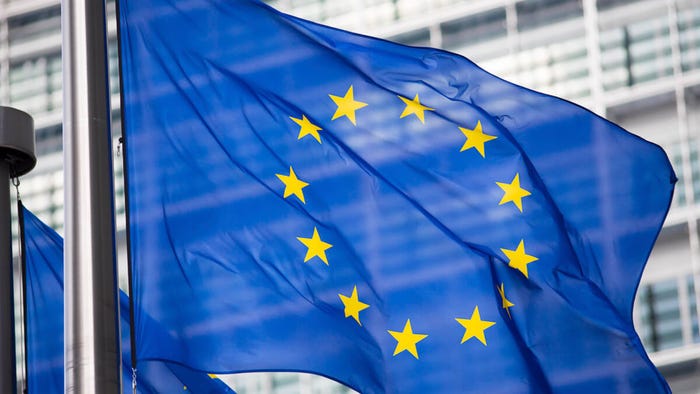
During the International Broadcasting Convention (IBC) in Amsterdam in September, a private French R&D institute with a challengingly punctuated name was showcasing a 5G standard-compliant software solution for mobile private networks (MPNs) called Dome. The organization wanted to demonstrate how such a solution could be used to create a "5G connectivity bubble," with potential for deployment in many vertical sectors including broadcasting and media.
The first target market for the product, which is set to become commercially available by the end of 2022, is France followed by countries such as Germany and the UK. However, Nicolas Dallery, sales and marketing director at b<>com, noted at the time that the key to deployment will be the ability to obtain private 5G licenses. "It's the only missing piece," he observed.
Such an assessment is certainly backed up by the latest update on MPNs from the Global mobile Suppliers' Association (GSA). Indeed, it comes as little surprise that the GSA found there was "typically a strong, positive correlation between the number of mobile private network references and countries with dedicated spectrum."
As things stand, the top five countries for private networks are the United States, Germany, China, the UK and Japan, with Finland and France following close behind. Dedicated spectrum has already been allocated in all these markets except for China, according to the GSA.
Figure 1:  The GSA has found a strong correlation between the number of mobile private networks and countries with dedicated spectrum.
The GSA has found a strong correlation between the number of mobile private networks and countries with dedicated spectrum.
(Source: Andrey Kuzmin/Alamy Stock Photo)
Germany has certainly been a front-runner in Europe, accounting for 81 of a total of 955 MPN deployments in the third quarter of 2022, 711 of them LTE and 391 5G. Indeed, the country made the somewhat controversial decision early on to allow industry and academia to apply for private 5G licenses for various use cases, with a particular focus on private and campus networks.
In November 2019, Bundesnetzagentur (the German regulatory office for electricity, gas, telecommunications, post and railway markets) launched the applications process for local licenses in the 3.7GHz/3.8GHz band for vertical use cases. It then opened up the 26GHz band (24.25GHz–27.5GHz) on January 1, 2021. Applications have typically come from large industrial enterprises, airports, fair trade organizers, universities, research institutes and others.
At the same time, the GSA notes that although Germany ranks second-highest in terms of the number of customer references, "many of these deployments are still in trial and test-bed stage rather than full commercial deployments."
France has also opened up frequencies in certain spectrum bands for industrial use cases, including the 3.8GHz-4.0GHz, 2.6GHz and 26GHz bands. In addition, France's mobile operators have a certain obligation to support industrial players, including the provision of dedicated 5G slices in the 3.4GHz-3.8GHz band.
However, progress in France has been slow. In October the French communications regulator said it had awarded three more local licenses at 3.8GHz-4GHz, taking the total of licenses awarded in this frequency band up to 13, which roughly works out at a rate of two licenses issued per month since March 2022.
Growing trend
Despite the less than rapide start in some markets, the GSA expects the correlation between the number of private networks and countries with dedicated spectrum to continue in the months ahead.
Indeed, the association notes that demand for MPNs "is being driven by the spiraling data, security, digitization and mobility requirements of modern enterprise and government entities. Organizations of all types are combining connected systems with big data and analytics to transform operations, increase automation and efficiency or deliver new services."
Potential demand for 4G and 5G private networks could also come from companies that currently operate private networks based on technologies such as TETRA, P25, Digital Mobile Radio, GSM-R and Wi-Fi.
"Many of these customers are demanding critical broadband services that are simply not available from alternative technologies, so private mobile networks based on LTE and 5G could eventually replace much of this market," the GSA said.
Overall, the GSA counts 72 countries around the world that now have MPNs. The three fastest-growing industry sectors were mining, with 15 customer references, followed by defense and peacekeeping with 13, and manufacturing with nine. Manufacturing, education and mining remain the three largest sectors for customer references.
There is, of course, a wide range of service providers and equipment suppliers that support MPN deployments, including mobile operators that have tended to be resistant to the idea of allocating spectrum for these types of uses.
Indeed, network operators are not always part of a private network deployment: Some enterprises with a private license work directly with a vendor or hyperscaler, for example. Major European operators such as BT, Deutsche Telekom, Telefónica and Vodafone are certainly investing a lot of time and effort in ensuring that they are able to secure a slice of the potentially lucrative private 5G market.
Want to know more? Sign up to get our dedicated newsletters direct to your inbox.
Meanwhile, the GSA does concede that the exact number of existing MPNs is hard to determine, as details are not often made public. The association counts customer references as unique organizations or government entities deploying one or more 3GPP-based 4G LTE or 5G networks in a given country that are worth more than 100,000 euros (US$106,527).
Related posts:
— Anne Morris, contributing editor, special to Light Reading
Read more about:
EuropeAbout the Author(s)
You May Also Like










